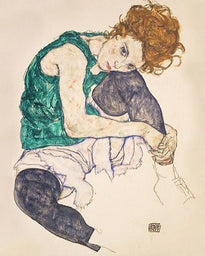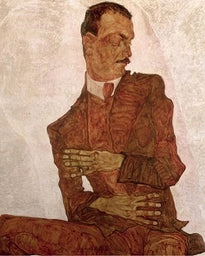Lavery Dual Clutch - Junier
DUAL LEATHER CLUTCH BAG
Regular price
Rs. 8,900.00
Sale priceRs. 4,450.00
Save Rs. 4,450.00
/
Tax included.
Shipping calculated at checkout.
The Lavery Dual Clutch is a set of 2 detachable clutch bags handcrafted in leather with a beautiful work of art printed on canvas on the front. Beautifully lined in a soft suedette, this bag screams individuality. With detachable elements like the strap and the tassel you can mix and match the elements of the bag to define your own look. the big clutch is reversible so it goes effortlessly into work mode. The clutch comes in its own protective dust bag with care instructions. Small bags also sold separately.
About the Lavery collection:
Inspired by the ultimate artistic love story - Our Lavery collection is named after Lady Lavery wife and muse of Irish artist Sir John Lavery. She was his inspiration for more than 400 works of art. We have created these bags to remind us of our own creativity and to put us in touch with our inner muse, for those who are comfortable in their own skin and unafraid to express their unique individual tastes. Always have a piece of inspirational art close at hand as a reminder that true beauty endures, it is trans-generational and trans-cultural. It touches the human spirit in an undefinable, primal way.The Lavery collection is a celebrations of Artists and their inspirations, like the Rouen family for Van Gogh, Henry Rosseau, the unamed girl with stockings for Egon Schiele, the boxers for Théodore Géricault.
About the Artist:
Henri Julien Félix Rousseau, was a self-taught painter, completely untrained in any established art techniques. He started painting seriously at the age of forty and by the time he was 49 he retired from his job in order to paint full time."His amateurish technique and unusual compositions provoked the derision of contemporary critics, while earning the respect and admiration of modern artists like Pablo Picasso and Wassily Kandinsky for revealing "the new possibilities of simplicity."" He is best known for his naïve, or primitive, childlike jungle scenes. He spent most of his life in the profession of a customs officer at the outskirts of town. Because of this, he was also referred to as Le Douarneir, or the “Customs Officer.”
Dimensions
Big clutch 28 cm x 21 cm
Small clutch: 22 cm x 16 cm
- A set of 2 detachable clutch bags, attached with a button fastening
- Large bag is made with pure leather and lined with soft suedette, has a zip lock pocket
- Small bag is made with pure leather and canvas printed front, lined with soft suedette, has a handy card pocket
- Detachable and interchangable strap and tassel
- Country Of Origin: India
- Seller Name: Ikka Dukka Studio Pvt Ltd
- Seller Address: FF, 458/1 Hanuman Mandir Road, Chirag Delhi. Delhi 110017
- Store in bag provided
- Keep away from moisture
3-5 working days for Domestic and 5-7 working days for International. Please check Pincode to confirm if we deliver to your location. For further details on shipping, please refer to Shipping Policy . For information on returns, please refer to our Returns Policy.
Product Code: IDWB-301
Product Code:
IDWB-301


























